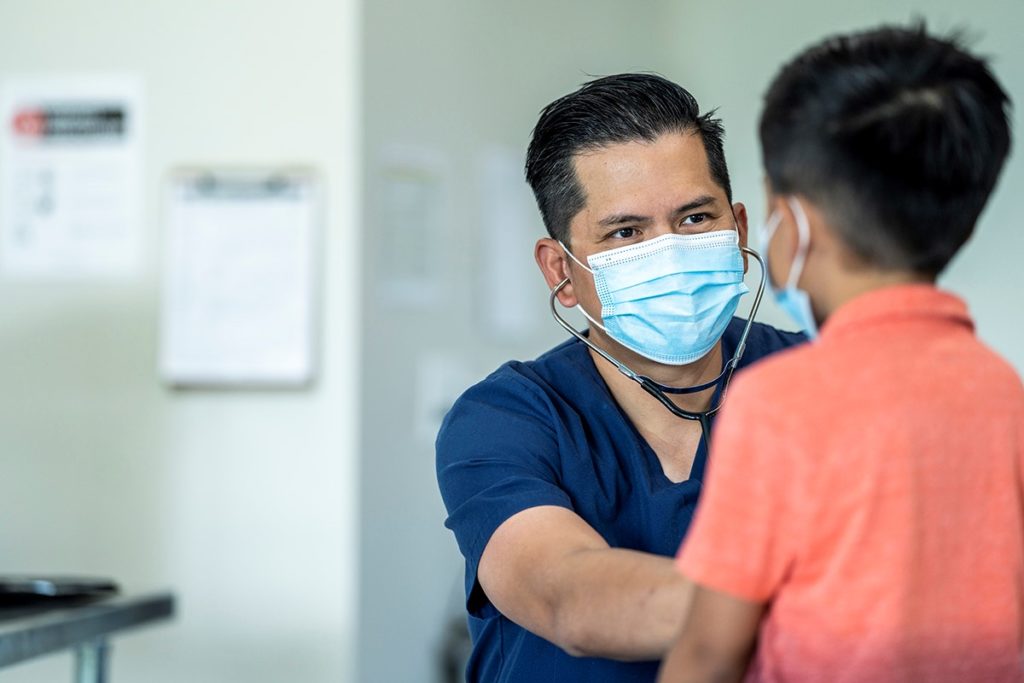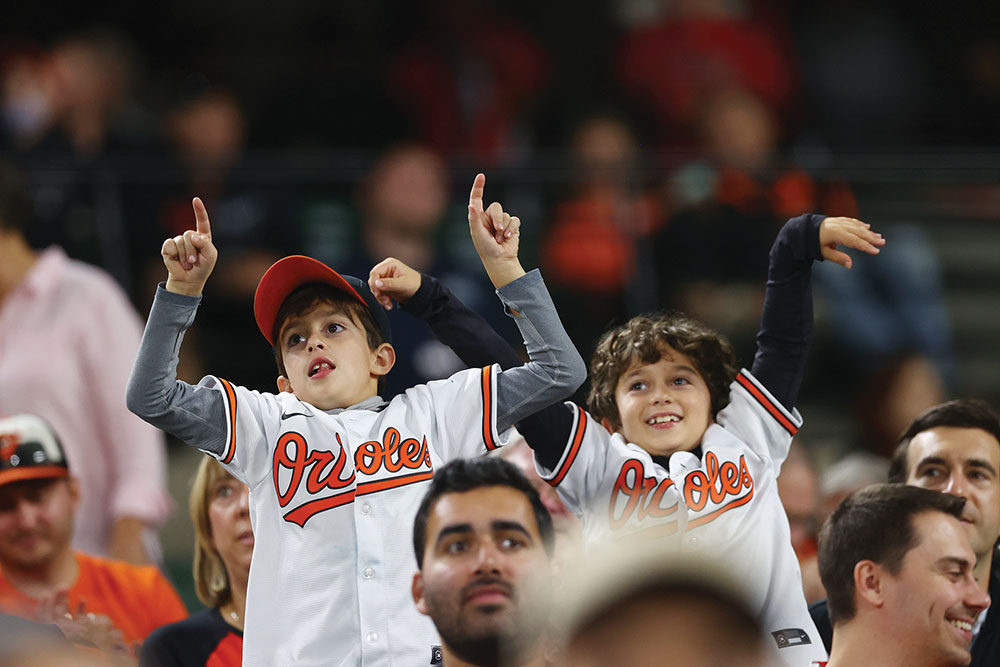
Dr. Rebecca Carter, a pediatrician with University of Maryland Medical Center, recently offered this uplifting tidbit from her work: Babies as it turns out can tell when a masked doctor or nurse is smiling at them. And, she says, they smile back.
“We are amazed at how well they comprehend the smiles behind the masks,” Carter admits.
It’s good news to ease the worries of parents, many of whom have not been to the doctor since the coronavirus pandemic changed everything in our world from school to work to health care. Now it’s time for their child to get annual vaccinations or a routine checkup. And these same parents want to know: What can they expect at the pediatrician’s office?
A pre-visit call
“We are absolutely seeing people coming back now, so it’s essential to get on the schedule,” Carter says.
When setting up an appointment for your child, staff will ask about any exposure to or symptoms of COVID-19, she says. A telehealth call may be set up between the doctor and parents concerned about a child’s symptoms. Kids with symptoms then could be sent to a designated test site to be screened.
No symptoms? An appointment will be made at the office.
Staff then will share new protocol: Patients over the age of 2 and their caregivers can expect to wear masks. Socially distancing also will be observed. Finally, families may need to arrive early or at the exact appointment time, depending on the practice’s protocol, Carter says.
At the appointment
Families may be asked to wait in their car until they are called into the office to avoid crowding the waiting room. Once in the office, patients will again be screened for COVID-19 symptoms and a nurse will take their temperature.
After screening, patients could be sent to a waiting room or immediately put into an examining room. Either way, because of the screening and social distancing, “it’s probably reasonable to expect just a little more time for an appointment,” Carter says.
Same doctor, new look
Kids should know that not much has changed about their doctor, expect that he or she may be dressed a little differently. Physicians and nurses will be wearing masks and goggles or protective glasses, Carter says. At some practices, they may also wear protective gowns.
“We may look a little different coming in,” Carter says, but this is a “great opportunity for kids to understand the value of masks.”
Business as usual
The extra safety protocols should reassure patients with ongoing medical issues that it is safe to return to their doctor’s office, she says. At the same time, telehealth has flourished; parents who need to refill a child’s medicine, for example, could accomplish that through a video visit with the child’s pediatrician.
And there are no delays for routine blood tests or other screenings, she says.
Additionally, all patients, whether high risk or not, should consider getting a flu shot this year because of COVID-19, she says. Both the flu and COVID-19 have similar symptoms, and there is no reason for families to “complicate their fall” with a non-COVID virus, she says.
Similarly, parents should keep up with their child’s vaccine schedule to stop an “outbreak of something that we could have prevented.”
So far, the patients Carter and her colleagues have seen this summer are “thriving and happy,” she says, adding that kids are resilient, often more so than their parents.









